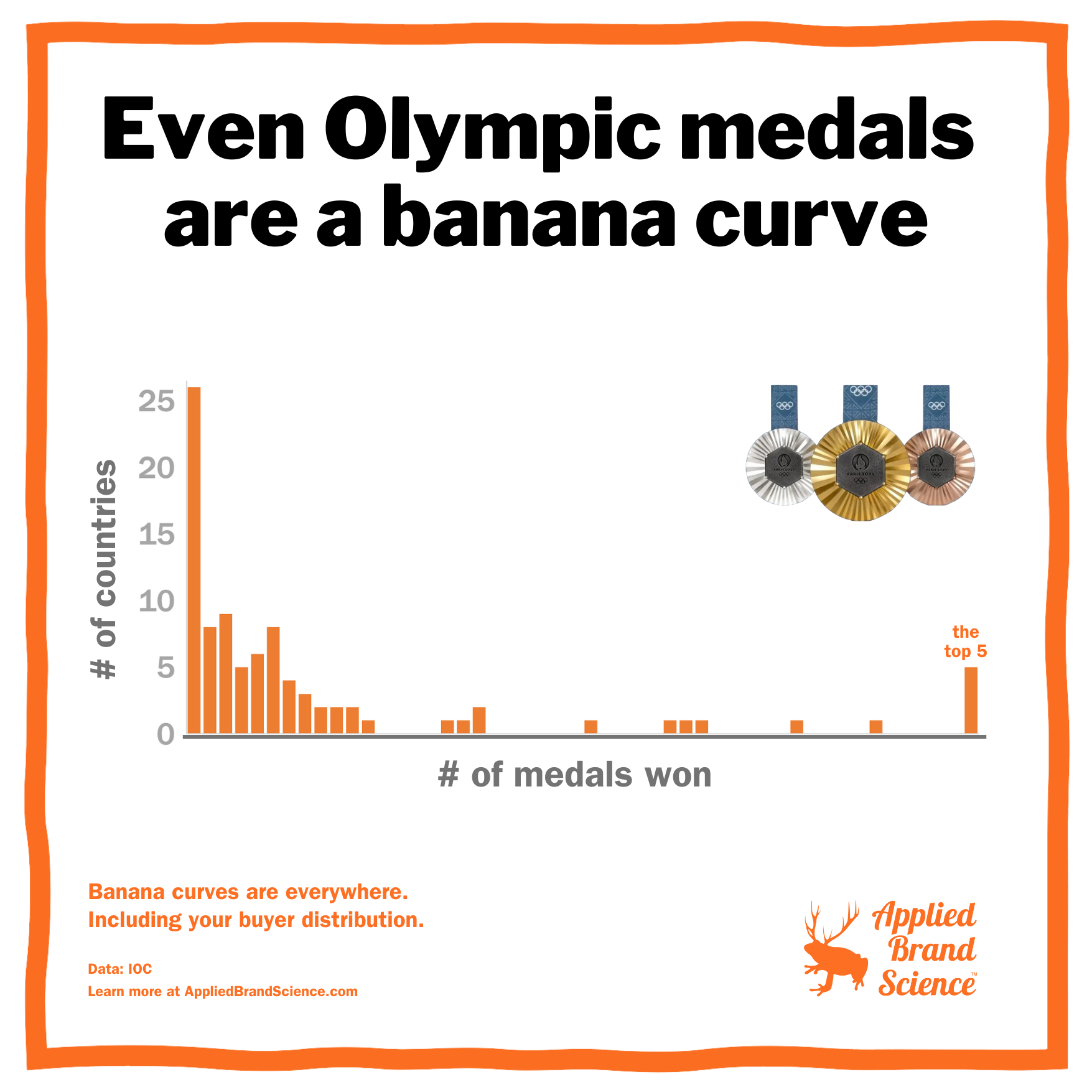Are Olympic medals a banana curve?
Like, is the medal count a bell curve, a banana curve, or something else?
No, this isn’t marketing per se. But it’s a fab example of this universal pattern.
The USA sits atop the medal count with 126 medals. China is next with 91. Then Great Britain with 65, and host nation France with 64.
At the other end of the distribution, 8 countries have 3 medals total, 11 countries have 2, and 15 countries have 1 medal each.
So, uh, decidedly not a bell curve. And yes, definitely a banana curve.
Along with being Olympic nerdiness, it’s a good example of how ubiquitous banana curves are in society.
And there are thousands of others: fans for artists on Spotify. City size. Company size. Words in most books. Upvotes of posts on Reddit. Citations of academic papers. (We won’t address the specific distributions these have or their ‘generative mechanisms’. That’s too mathy for this post.)
And of course, your distribution of buyers is, most likely, a banana curve. I’d BET on it. And I’d win. (Unless you have 2 clients and they’re the Dept of Defense & the FBI, or something.)
So lessons? Bien sûr!
1. Your buyer curve is probably a banana curve: gobs of light buyers, very few heavies. #HarshButFreeing.
2. Don’t get starstruck by your (small cadre of) vocal fans and ignore the quiet, happy masses.
3. Learn about allllllll the implications of the banana curve. (Call us: we can help. Obvi.)

